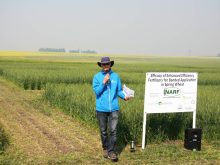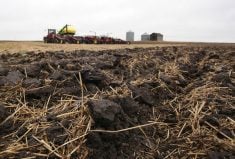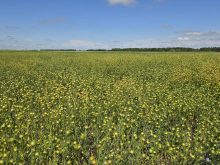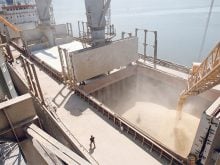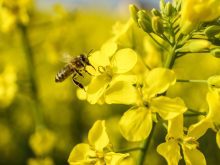Deere says it will have in-crop, targeted weed control available for some select crops for 2023 sprayer models
Rapid growth in the smart spraying market continues with the launch of John Deere’s See and Spray Ultimate, which can detect and spray individual weeds growing in soybean, corn and cotton crops.
John Deere already has a smart spraying product called See and Spray that it launched last year. It can target individual weeds in fallow fields, often described as green-on-brown.
Franklin Peitz, John Deere marketing manager for the See and Spray products, said the new system, which is capable of green-on-brown applications, based on machine learning technology.
“We’ve fed the model hundreds of thousands of images of weeds and crops over the last few years and been able to refine that machine learning to now be able to release this product on the market,” Peitz said.
Growers and industry analysts have been waiting for John Deere to market a green on green system ever since the company bought Blue River Technology in 2017.
Peitz said the machine learning programs and camera-based visualizations were developed by Blue River, but it took time to refine the algorithms for specific use cases and to integrate the technology in the company’s self-propelled sprayers.
See and Spray Ultimate is factory-installed and available for model year 2023 John Deere 410R, 412R, and 612R sprayers.
On the 120-foot booms, “we’ve got 36 cameras that are scanning 2,200 sq. feet at all times. We also have computer processors attached to the boom, 10 different computer processors that are kind of the brains of the operation,” Peitz said.
“The cameras are constantly scanning the processors to identify and detect weeds from crops, and the processors are sending a signal down to the nozzle where the weed is to turn on to spray. That all happens in real time in 0.2 seconds, or the blink of an eye.”
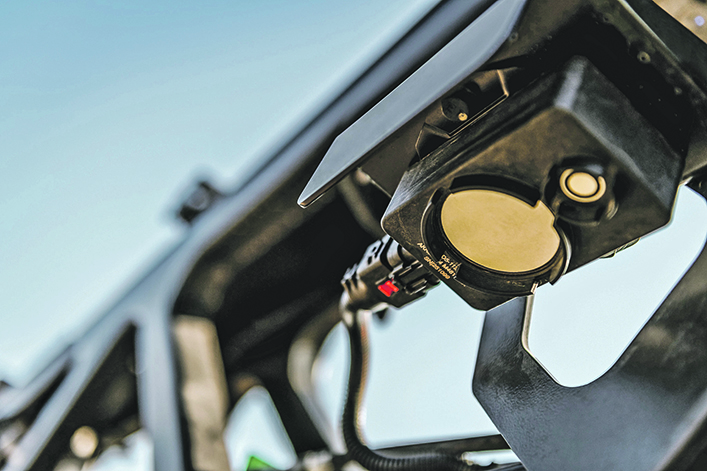
He said the system can detect weeds within rows, but they can be difficult to detect when the crop begins to canopy.
However, when the sightline is not obstructed, the system can detect weeds as small as three quarters of an inch when the sprayer is traveling up to 12 m.p.h.
“On the Gen 4 display, you can actually change the sensitivity setting. So, if you only want to catch the big weeds in the field, you can adjust the setting to only pick up those versus the smallest setting where you get you down to that three quarters of an inch,” he said.
Peitz was unable to describe the hit rate that See and Spray Ultimate must achieve in order to compete with broadcast applications, but he said the company has tested extensively to ensure the two systems are comparable.
A significant feature of See and Spray Ultimate are the dual product streams.
“When a customer would be making an early fungicide pass in the field, they can use the dual tank and simultaneously broadcast herbicide and target spray non-residual herbicides. So, you can make cleanup passes even while you’re broadcasting something like fungicide. So, you can make two in one pass for more productivity gains as well,” Peitz said.
The dual product system will also be useful for growers dealing with herbicide resistant weeds, where one of the product streams can be used for a blanket herbicide application, possibly with residuals, and the other product stream can apply a non-selective herbicide to kill resistant weeds.
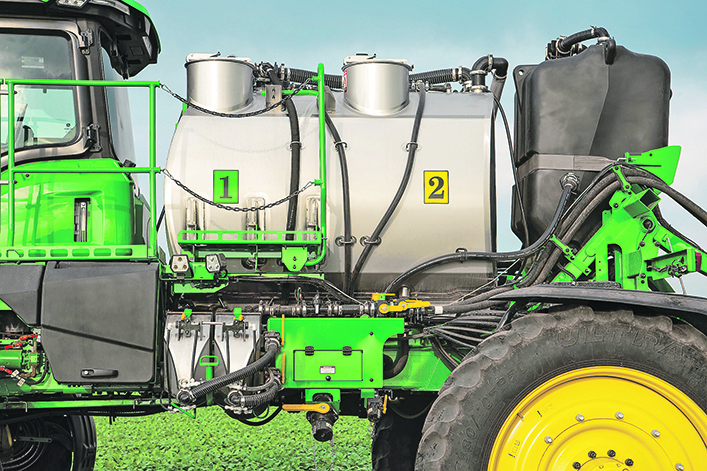
The two independent plumbed product streams are recirculating and linked to the same split tank.
“We’ve got 1,000 and 1,200-gallon options. On that 1,200-gallon option, it’s a 750 and 450 split with 450 gallons being the targeted spray tank. It’s extremely versatile,” Peitz said.
“You could combine both tanks for one mix and only spot spray, or only broadcast, or you could separate two different mixes and again broadcast out of the A nozzle body while target spraying out of the B nozzle body.”
See and Spray Ultimate is built on the foundation of John Deere’s Exact Apply technology first launched in 2018, which allows pulse width modulation of each nozzle up to 30 hertz.
“We have pressure recirculate and product reclaim installed in See and Spray Ultimate, and then we do have a separate rinse tank on there as well,” Peitz said.
An as-applied map is automatically created, where operators can see areas in a field where product has, and has not, been applied. Herbicide savings derived from spot spraying are automatically calculated by the Gen 4 to help operators decide if they want to continue spot spraying or if they want to switch to a broadcast application.
After a field is sprayed using See and Spray Ultimate, a weed pressure map is uploaded to the John Deere Operation Center.
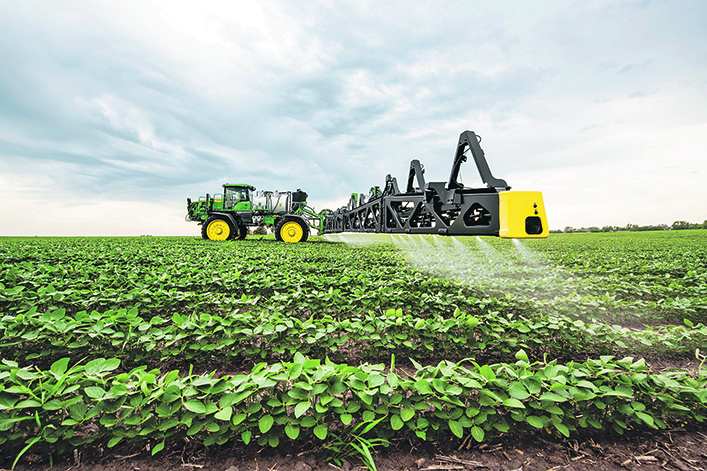
“It’s essentially a heat map where you can see where the weed pressure is and where density is highest in the field. That can help our customers with more information, to say maybe to talk to their chemical consultant, or compare yield maps with these weed maps and make better decisions down the road,” Peitz said.
The algorithms that enable See and Spray Ultimate to identify individual weeds in a crop stand are often specific to crops and regions where they were trained.
John Deere has focused its initial testing in the Midwest, Mississippi Delta and West Texas, which is where the system will first become available.
However, Peitz said the company is actively developing machine learning algorithms for further crops and regions, as well as for other use cases.
“We’re trying to see how this technology could help identify nutrient deficiency and target apply that or identify insects or pests and only spray those. This is just the start of a journey for See and Spray,” Peitz said.






